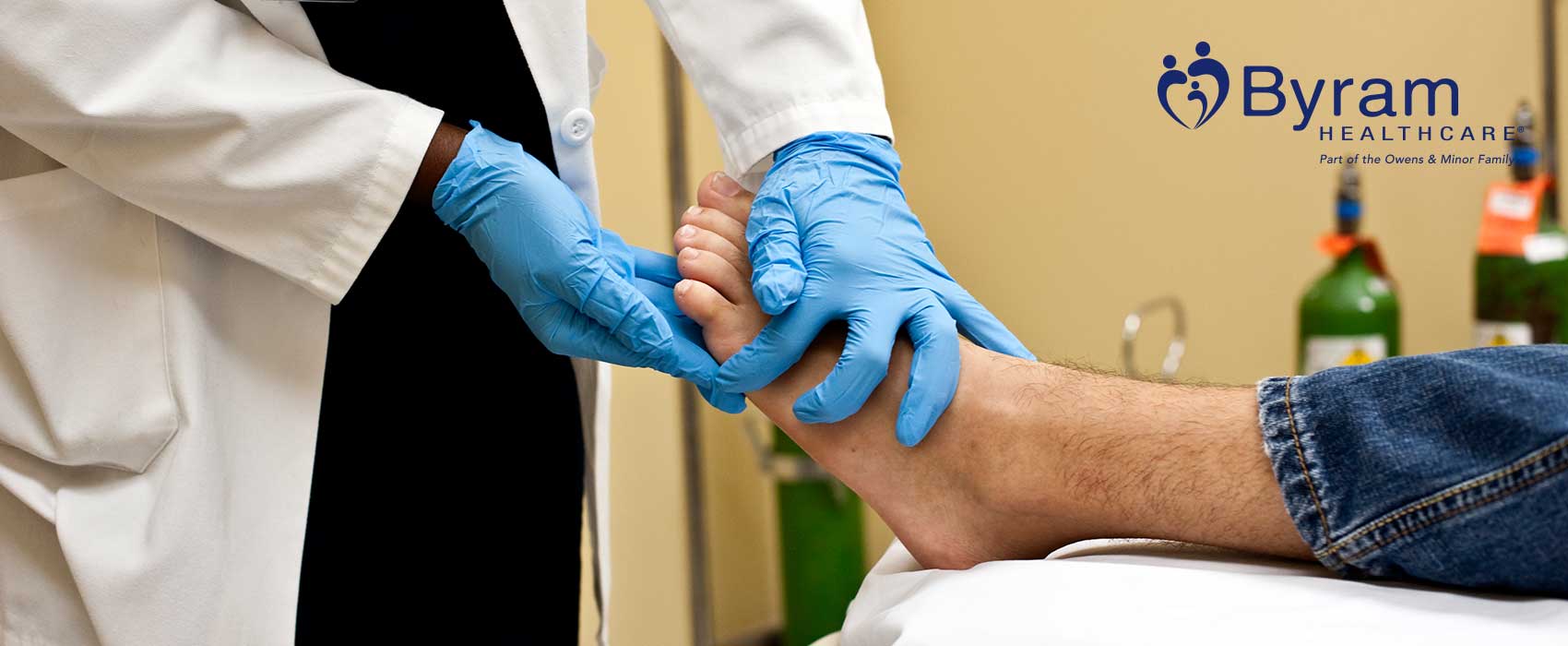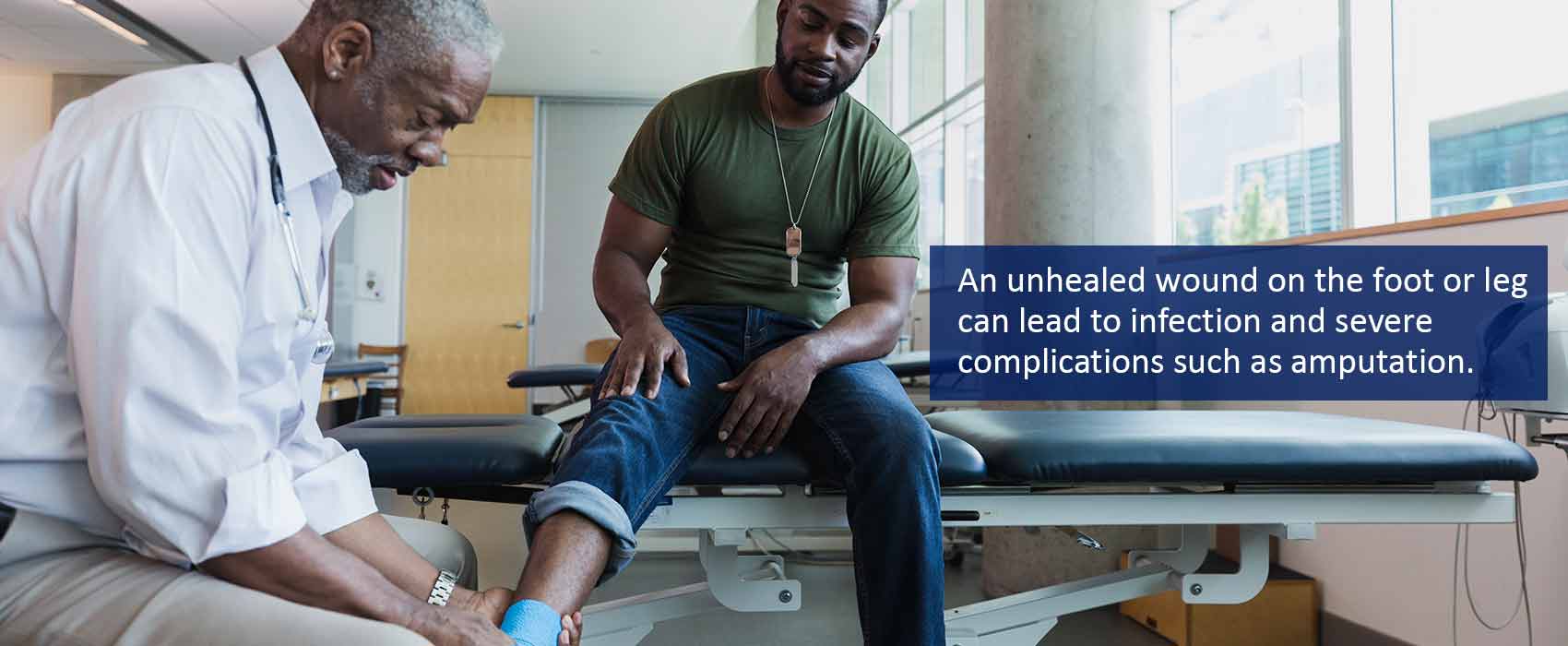
Scars occur after damage to the dermis initiates the formation of new collagen fibers. They’re a natural form of healing, a biological response to injury and trauma. The scar tissue itself is a thick layer of collagen fibers that results in a different texture than the surrounding skin—thus making it stand out. Scar healing and treatment is available to help reduce their appearance, but they never go away. The only way to avoid scarring is to avoid injury, which, as we all know, is not always possible.
The best way to minimize your chance of scar tissue is by utilizing the proper wound healing techniques. Follow your doctor’s treatment plan and make sure that you’re using the correct wound dressings, irrigation techniques, and applying any topical creams as needed. To help you better understand scar healing and treatment, here are a few things you need to know.
Different Types of Scars
Our skin is our body’s first line of defense against the outside world. It protects our veins, arteries, organs, and muscles yet it’s extremely delicate. Injury is common and can occur from trauma, disease, accidents, surgery, burns, or skin conditions. When damage happens, it drastically changes the way our skin looks. While it’s important to first address the damage using proper wound care, it’s good to have an idea of what to expect.
Keloid Scars
Keloid scars are very thick scars that include an irregular cluster of scar tissue at the location of the wound. They’re often raised and rounded but extend past the edges of the wound border. Keloid scars take on a darker appearance than surrounding skin and are formed from excess collagen during the wound healing process. While they can occur on anyone who suffers a wound, keloid scars are more common on darker-skinned people and can occur up to one year after the original trauma to the skin.
Keloid scars usually form as a result of an overly aggressive healing process. Depending on the severity of these scars, mobility can be limited. To avoid long-term problems, your doctor may recommend surgery to remove the scar, steroid injections, or silicone sheeting.
The best way to make sure that you avoid any problems is to pay special attention to your wound healing process. If you have a serious injury, an injury that covers a large surface area, or chronic wounds, make sure that you use the proper wound dressings such as gel pads with silicone to help prevent keloids and reduce severity in those that do develop.
Contracture Scars
Contracture scars most commonly form as a result of burns but may also form from other injuries that cover a large surface area of skin. Over time, they begin to tighten the skin as the scar tissue pulls the edges inward. This, in turn, impairs mobility of the affected area. If your burns were severe and reached deeper levels of your skin, contracture scars can begin to affect your muscles, joints, tendons, or even nerve endings.
If you have any burn injuries, make sure that you work closely with your doctor to undergo the proper wound healing process. Burns usually require some sort of debridement, which can be extremely painful for those affected. Talk to your doctor about how to create a wound healing plan for your burns and make sure that you follow the treatment plan.
If contracture scars do end up forming, there are a few ways to treat them and restore mobility. The most effective treatment option is surgery using skin grafts to replace the contracture scarring. This can also be done with skin flaps, which are similar to grafts except that they have their own blood supply.
Hypertrophic Scars
Hypertrophic scars appear as raised, reddish scar tissue that are comparable to keloid scars. However, with hypertrophic scars, the scar tissue does not extend past the wound boundaries and is therefore contained to the site of injury. They can also occur slowly over time, developing over the course of a year or longer.
Again, the best way to avoid hypertrophic scarring is to properly take care of your wound during the healing process. If they do occur, there are options similar to keloid treatment to help reduce the severity of the affected area. Steroid injections seem to be effective in decreasing the chance of hypertrophic scar tissue returning after treatment, but there will still be scarring.
Acne Scars
A common type of scarring is acne scars. These occur from severe acne that leaves deep pits or angular scars in their place. Acne scars can be prevented by the use of topical ointments, the avoidance of touching or picking acne, and working with a dermatologist to treat the underlying cause of acne.
Most scar tissue is normal and appears flat and pale. The above types of scars occur primarily after an over production of collagen. Some scars may become sunken, such as the case with acne scars and scars resulting from a surgery. Other scars can appear to be stretched such as in the case with stretch marks.
Preventing Scar Tissue
The best way to minimize scarring is through proper wound care. When your body is repairing your skin, make sure to aid the process by cleaning the wound frequently, using the proper wound dressings, irrigating when necessary, and keeping the wound moist.
Always clean your injury and remove any excess dirt, debris, and germs. Next, add a topical ointment—as directed by your doctor—to make sure that the wound environment stays moist. This may be as simple as using petroleum jelly or you may need wound dressings that are more advanced like collagen dressings, composite dressings, hydrocolloid dressings, or more.
After you’ve cleaned the affected area and applied ointment, the next step is dressing it in the proper bandage. There are different bandages for different types of wounds, so make sure that you discuss your needs with your doctor if your wound is anything more than a small scrape or cut. Chronic wounds need specific types of dressing to allow for drainage and an optimal environment. Once you determine which type of bandage you’ll need, make sure that you’re regularly changing it to keep the wound clean and foster healthy healing. If your wound begins to emit an odor, pus, or change color, contact your doctor immediately.
While proper wound care will minimize scarring, chronic and more severe wounds will inevitably result in permanent skin changes. Scarring is a natural part of your body’s wound healing process and therefore, a positive sign. It means that you’re no longer injured, and your skin has repaired itself and the surrounding tissues. The only wounds that do not result in scars are very minor ones.
The Best Ways to Treat Scars
The best way to treat scars depends on the type of scarring. It’s also important to remember that scarring usually cannot be completely removed. By combining one or more of these treatment options, you can improve the appearance of scar tissue. Always talk to your doctor if you have any questions or concerns regarding treatment and make sure that you use licensed services when needed.
- Topical Scar Treatments – there are plenty of scar creams on the market that can help minimize the appearance of certain types of scars. Talk to your doctor to find a personalized recommendation or try one of the many over the counter options.
- Surgery – surgery can be done to help minimize the scars appearance, especially if the scarring is keloid or hypertrophic.
- Steroid Injections – steroid injections help to flatten raised scars and reduce the appearance of keloid or hypertrophic scar tissue.
- Radiotherapy – for those who experience very severe keloid or hypertrophic scars, radiotherapy is an option to avoid recurrent tissue growth.
- Dermabrasion – this works to remove superficial layers of the skin in an effort to help blend the scar tissue with the surrounding skin. This is especially effective on slightly raised or irregular scars.
- Microdermabrasion – microdermabrasion is similar to dermabrasion but less invasive. There are over the counter options for this type of treatment.
- Laser Resurfacing – this is another option that removes the surface layers of your skin in an effort to achieve a more uniform composition. It’s commonly used for acne scars.
- Filler Injections – for scars with uneven surfaces or those that are sunken in, filler injections may be helpful in reducing appearance.
- Microneedling – microneedling creates a number of small punctures on the superficial layer of your skin to help stimulate your body’s natural collagen production.
- Cryosurgery – this treatment involves freezing the scar tissue to help reduce the size and alleviate any bothersome symptoms like pain, itchiness, or discoloration.
Contact Byram Healthcare—a leading wound care supplier with an outstanding Chronic Wound Program. We’re here to help you on your path to recovery with everything from bandages and gauze to collagen dressings, hydrogels, and compression bandages.



